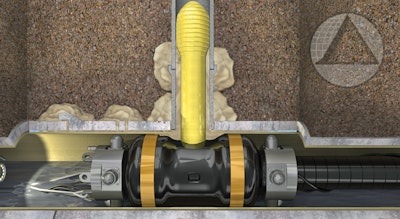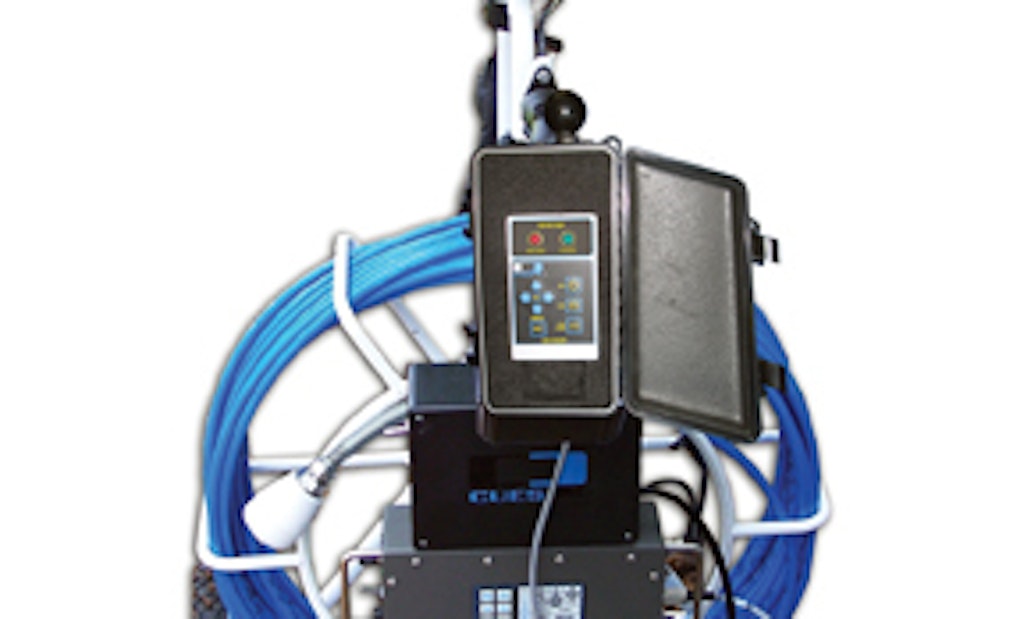Interested in Relining/Rehab?
Get Relining/Rehab articles, news and videos right in your inbox! Sign up now.
Relining/Rehab + Get AlertsRestoring the structural integrity of sewers, stopping leaks and controling groundwater intrusion are vital reasons to carefully choose a grout rehabilitation system. Whether you're a municipal manager looking to bring I&I work in-house, or a contractor trying to decide which product best suits your business, proper grouting equipment is a must. From checmicals and packers to fully outfitted grout trucks, the options are endless.
Daniel Magill, president of Avanti International, manufacturer of cement- and chemical-based grouts, offers some advice on selecting grouting equipment. "There are several chemicals to choose from, but 99 out of 100 contractors use acrylamide chemical grout because it’s the thinnest product on the market, it’s been in the U.S. since the 1950s and it’s got the greatest longevity," he says.
AV-100 chemical grout from Avanti International has the same viscosity as water, which allows it to quickly permeate the substrate and cure to form a matrix with the soil and porous rock.
Pressure injecting the grout into voids with a remote packer also eliminates water migration into the sewer system. The product has a 362-year half-life in soil as rated by the U.S. Department of Energy.
The grout is a permanent solution for controlling groundwater and infiltration in manholes, laterals and mainline sewers. It can be used with a remote packer, encapsulating hazardous waste, preventing structural movement due to groundwater, and sealing entire sewer and underground transit systems.
The chemical grout was originally a granular form only and contractors would have to mix a binding agent in the field. Now, Magill notes, it’s premixed in the bag. “We also now make it as a liquid so we’ve made it even easier for the contractor.”
The grout was used primarily in mainlines in the 1960s then laterals in the 1980s, and in the 1990s it started getting use in hazardous waste containment and now it is being used in mines, tunnels and subways, Magill says.
FOR THE JOB
Magill says there are several things a contractor should do before grouting: the first is to clean the lines and inspect them to see where the leaks are and determine the best solution.
“Grouting is not the silver bullet, but there are a lot of different techniques out there like pipe lining and pipe bursting,” Magill says. “If they have good pipes and the only problem is infiltration, then they’ll save a ton of money just grouting instead of putting in new structure. If you have good structure, why put in a new one?”
Selecting the right truck is also important when deciding if grouting is the correct route.
The CUES portable and truck-mounted grout rehabilitation systems are available for mainline joint and lateral sealing and can be equipped with the latest CCTV equipment for inspection.
Applications include joint testing and sealing of mainlines and lateral joints, manholes, junction boxes, large-diameter pipes or any other low-pressure waterproofing application.
All systems can be configured to run urethane, acrylamide and acrylate grouts. Dry freight box (for export) and trailer-mounted systems are also available. Grout packers are available for mainline and lateral sealing. TV/grout/lateral reinstatement trucks are also available as an all-in-one production unit for TV inspection of mainlines and laterals (optional), joint sealing of mainlines or laterals, and lateral reinstatement.
“We really promote that you need to grout the whole sewer system, not just the mainline joints,” Magill says. “What happens to the groundwater when you seal a mainline joint? It’ll just follow the path of least resistance and go into the next point of entry, which might be the lateral connection and it might be up the lateral or to the manhole.
“When you seal one joint, there’s three other points of entry where the groundwater is going to try and get in.”
APPLICATION TECHNIQUES
There are five application techniques for grouting all points of entry in the sewer system, which can include probe grouting, remote packer injection, curtain grouting, crack injection and expanded gasket placement (EGP).
“For the most part when it comes to mainlines and laterals, it’s all done via a packer,” Magill says. “They slide a cylinder into the pipe and the grout actually goes outside the pipe and permeates the soil and creates a gel-soil matrix. That is what prevents exfiltration of the sewage and infiltration of the groundwater.”
(All equipment listings from Cleaner Product Focus, October 2012)

What factors do you use to evaluate grouting products? Leave a comment below.







